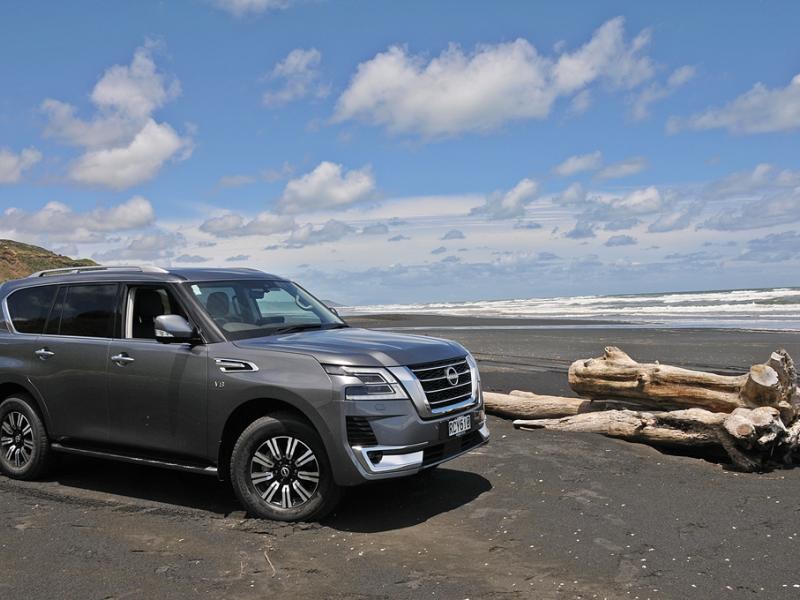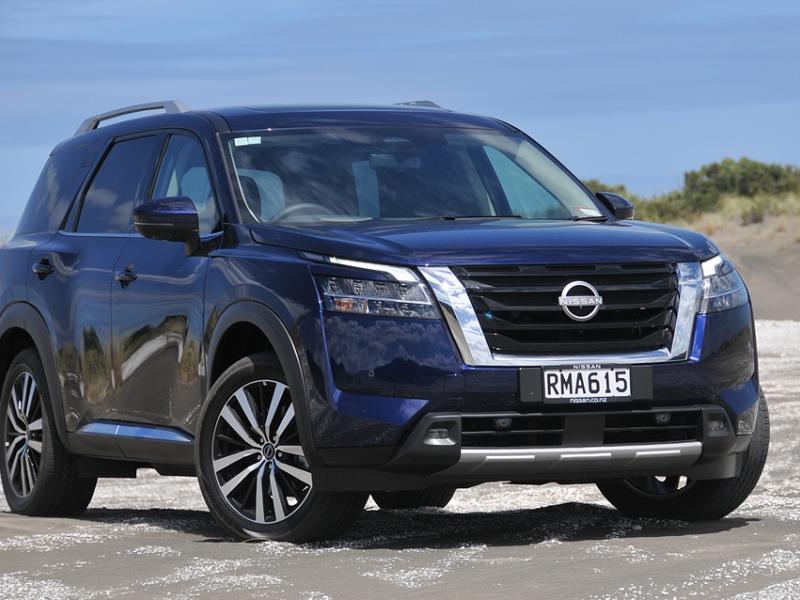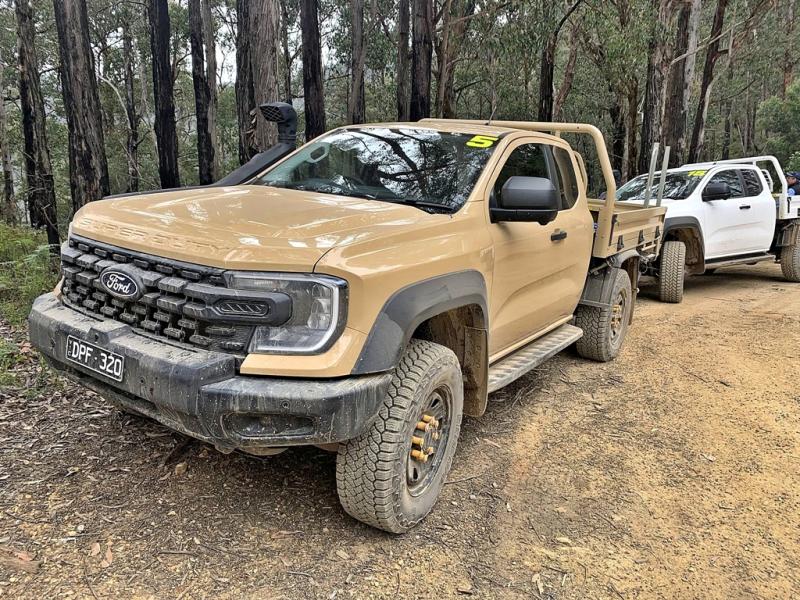The over-arching philosophy that comes through strongly with the new range is that the engineering - the ‘heart’ of the Ranger - beats strongly through every model. There’s not really an entry level model, rather the effort invested in the range benefits the whole spectrum of Rangers.
Engines, transmissions, electronics all run across the model range as a framework of capability. The key changes to the chassis are true for all models: wider track, longer wheelbase, greater stability.
Ford knows there will always be a demand for a ‘working’ Ranger. The XL fills that space with single – or bi-turbo engines backed respectively by six-speed or ten-speed automatic transmissions. The 4WDs all start off with the 154kW/500Nm 2.0L bi-turbo diesel engine and ten-speed transmission. In the case of the XL, the transmission is part-time 4WD.
Manual transmissions are off the menu, though on the drive part of the launch we explored the shifter option: clicking it full rearward into ‘M’ and then using the ‘+’ and ‘-’ buttons on the side to pull down into first gear. Idling the XL down a steep switchback logging access road, the truck never showed signs of running off, holding speed almost like a manual. This would leave us the option of changing to 4Lo to hold speed if the going became steeper. A 4WD purist will always sing the praises of straight full-on manual/first gear/4Lo for serious slope work, but these days more and more are working out just how good a set-up like the XL’s can be for such tasks.
The XL is the only model in the range to feature halogen headlamps; the rest all get the slightly more modern (and undoubtedly more expensive) LED arrays. All new Rangers feature that C-clamp headlight/running light design.
Inside, much of the high-end foundation spec is retained, because the best aspects are of course the ergonomics. The clever door catches, the very natural ‘to hand’ configuration of the armrest and mode-dial, together with features like the massive, near-vertical 10.1-inch infotainment touch-screen will make it easy to live with. Choose your weapon: Apple CarPlay and Android Auto are both standard, as is Ford’s Sync 4 connectivity. All new Rangers have an embedded modem.
Safety and tech are comprehensive packages: evasive steer assist, post impact braking; lane keeping alert; lane keeping aid and road departure warning are all bundled into the XL. The lane – keep functions bear some scrutiny. Ranger has a system that goes beyond the invisible hand mode familiar to many these days. Where the more basic systems try to fling the vehicle away from the perceived risk, Ford’s newest version senses both sides of the road and uses a gentler level of assistance to keep the vehicle on course. It can also sense the edge of the road even when there are no road verge lines to work from.
There are nine airbags, including one that keeps heads apart if the vehicle is involved in a rollover.
The XL is available in single-cab, super cab and double cab. In keeping with its utilitarian fit-out and purpose it is offered as a cab-chassis or with a wellside. The 4WD has 17” steel wheels – the best choice for working on the farm or construction site, and not so bad if mixed use is likely – simply whip them off, stack them in the shed and fit the alloy wheels of choice. Tyres are 255/75 X 17 Bridgestones.
Any of the XLs are available in a range of six colours at no extra cost.
We’d guess the single-cab-chassis with a flat deck will be the farmer’s friend, as it always has. The double cab, with its ability to move a crew and slightly less gear, will be right at home in forestry and on construction sites.
Leaving aside the rear-wheel-drive versions that might not be so useful on the farm, the XLs start at $58,990.
XLT takes things forward
Big steps: the XLT is the next model up the range, but the move up brings a significant boost in specification. The mechanical muscle is first: 2.0L Bi-Turbo engine with 10-speed automatic and selectable 4WD. Where the XL has a mechanical hand-brake, XLT has an electronic one. The transmission’s shifter is ‘conventional’; the e-shifter dropping in a further rung up the ladder.
Underneath, though, come rear disc brakes; the whole brake array assisted by an electronic booster.
Then there are the first of the drive mode interfaces, grouping functions together and offering a range of pre-sets for all kinds of terrain. These modes are the way things will go over the next few years.
There’s a tyre pressure monitoring system too, handy getting the XLT’s more aggressive tyres equalised after an air-down off-road adventure. TPMS is actually mandatory in some of the markets where Ranger will be sold.
Safety is of course massively catered for and best explored through Ford’s online spec sheets. One notable advance is in the ‘hand of God’ lane keeping assist (LKA) system. Where most other utes and SUVs use cameras, radar or a combination of the two and monitor the white line, grabbing the wheel and steering the vehicle away from the lane edge – sometimes quite roughly and occasionally at a ‘difficult’ moment – Ford’s new system watches both side and simply steers the vehicle between the two-lane markers. It can apparently even do so when there is no white line visible.
‘Intelligent’ Adaptive Cruise Control (ACC) works hand in hand with Traffic Jam Assist, which ties in this new Lane Keeping Assist and a stop-and-go function.
As the safety tech becomes more and more advanced, so do the test programmes that govern safety ratings. The Rangers can hardly score less than five stars.
Looking out the back window is easier, with wellside bed lighting. Working (or brewing a cuppa) gets easier too with 12-volt power to the bed, and there’s a power tailgate lock for greater security.
Gidday, Sport, how’s it going?
Another huge step forward. The Sport slots in between XLT and Wildtrak and brings a visually tougher edge to the new Ranger. Beefy front tow hooks, an equally beefy front skid-plate, 18-inch aluminium alloy wheels and more.
Clearly responding to customer feedback and demand, the Sport is only available as a four-door double cab wellside.
At this point we welcome the new V6 turbodiesel, backed with full-time four-wheel drive thanks to a clever clutch-plate type centre diff.
Eight-way power adjust for the driver’s seat is worth the step-up on its own.
Also on the incremental step-up, there’s inductive wireless charging for phones. Well, selected, later model phones. Not the editor’s old model iPhone SE but never mind.
Wildtrak
Well, FX4 and FX4 Max are not in the range right now. Wildtrak takes on the mantle of flagship, and it definitely delivers.
Wildtrak gives more of everything. The BiTurbo engine lines up here alongside that lovely V6 turbodiesel, offering buyers their choice of torquey power plant to go in front of the ten-speed auto transmission.
Among the incremental tech steps, Wildtrak gets fully automated park assist for all those who are simply unable to park themselves. Now we just need a trailer park function for those boat ramp moments.
As Ford carefully notes: “Driver-assist features are supplemental and do not replace the driver’s attention, judgment and need to control the vehicle.” In other words, nice things to have but c’mon, pay attention people, driving is too enjoyable to leave it to a passionless binary AI function.
Whichever engine is preferred, the e-shifter is here as is the electronic park brake.
Wildtrak gets its own signature grille too, and there are puddle lights build into the mirrors. No excuse for getting those white Nikes all messy now.
The infotainment touchscreen gets bumped up to 12 inches, and there are unique custom-stitched Wildtrak leather seats.
The Wildtrak is fit for purpose too, with 18-inch alloy wheels and all terrain tyres.







